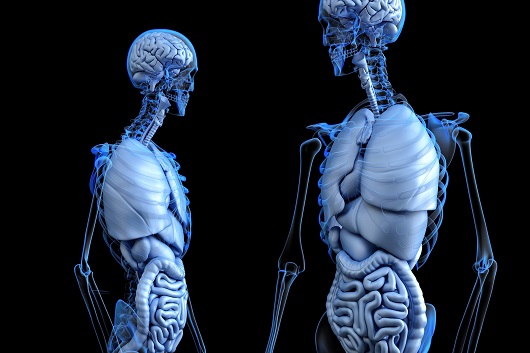Tough times made our brains grow large

Tough conditions are responsible for making the human brain disproportionately large, new research at the University of St Andrews has found.
Contrary to previous theories, that suggested we evolved larger brains to cope with complex social relationships, instead, when human ancestors cooperated to solve problems, this made brains smaller as working together allowed human beings to save investing resources in the brain.
Published today in Nature (23 May) the research, by Dr Mauricio González-Forero and Dr Andy Gardner of the School of Biology at the University of St Andrews, sheds light on a mystery long cast over the story of human evolution.
Dr González-Forero said: “The findings are intriguing because they suggest that some aspects of social complexity are more likely to be consequences rather than causes of our large brain size, and that the large human brain is more likely to stem from ecological problem-solving and cumulative culture than it is from social manoeuvring.”
For decades debate has raged over why the human brain has evolved to be so unusually large. A number of theories exist including the ‘social brain hypothesis’, which suggests that bigger brains evolved to help manage our increasingly complex social lives, and the ‘expensive tissue hypothesis’, which suggests meat-eating allowed brains to evolve at the expense of the gut.
A fundamental problem is that tests of these theories rely on correlative data and so are unable to disentangle cause and effect, eg, whether brains have grown large to allow us to live in large social groups or have evolved for other reasons but later allowed living in large social groups.
Now, Dr González-Forero and Dr Gardner have created a new mathematical model to ascertain which situations are actual causes, rather than just side effects, of large brains. Specifically, it mechanistically models the energy costs of brain growth and maintenance and the brain’s ability to enable its bearer to solve environmental and social problems.
Applying its techniques to humans, the study found that human-sized brains and bodies can evolve when individuals live in tough environments, engage in lots of cooperation, and undergo a reasonable amount of between-group conflict.
But in contrast to current understanding, the study finds that it is tough environments in particular that expand brain size, provided that individuals can keep improving their skills through their youth.
Such sustained improvement of the individuals’ skillsets as they age may be facilitated by cultural processes, ie, learning things that previous generations have figured out rather than figuring them out for themselves – although the study does not model these processes explicitly.
The study concluded that a combination of difficult environments and cultural processes likely caused human brain expansion and, surprisingly, that the effect of cooperation and between-group competition is not to increase brain size, but actually to decrease it. The reason is that, by cooperating, individuals can rely on each other’s brains and so can save resources by growing smaller brains themselves.
The paper Inference of ecological and social drivers of human brain-size evolution by Mauricio Gonzalez-Forero and Andy Gardner is published in Nature on 23 May 2018, available via http://dx.doi.org/10.1038/s41586-018-0127-x
Notes to news editors
Issued by the University of St Andrews Communications Office. Contact Fiona MacLeod on 01334 462108, 07714 140 559 or [email protected].
Category Research